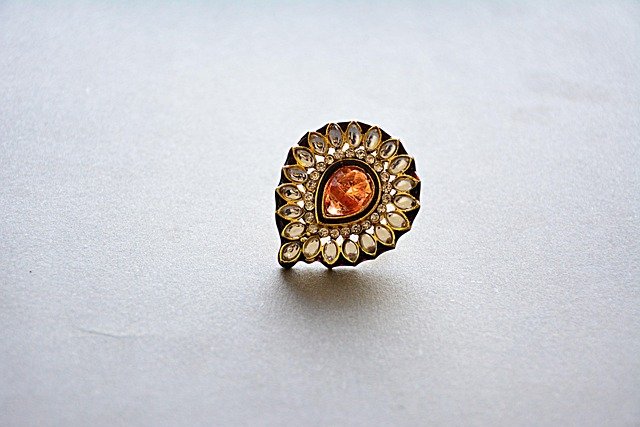Antique Rings: A Journey Through Time and Craftsmanship
The allure of antique rings captivates jewelry enthusiasts and history buffs alike. These exquisite pieces serve as tangible links to the past, each one telling a unique story through its design, materials, and craftsmanship. From Victorian elegance to Art Deco boldness, antique rings offer a glimpse into the artistic sensibilities and cultural values of bygone eras.

How do Victorian rings differ from other antique styles?
Victorian rings, crafted during Queen Victoria’s reign (1837-1901), are characterized by their romantic and sentimental designs. This era saw a surge in jewelry production due to the industrial revolution and the discovery of new gemstone sources. Victorian rings often feature intricate metalwork, including filigree and repoussé techniques. Motifs such as flowers, hearts, and serpents were popular, reflecting the period’s fascination with nature and symbolism. Gemstones commonly used in Victorian rings include diamonds, sapphires, rubies, and pearls, often set in yellow gold or rose gold.
What gemstones are typically found in antique rings?
Antique rings showcase a wide array of gemstones, each reflecting the tastes and technological capabilities of its time. While diamonds have been prized throughout history, colored gemstones played a significant role in antique jewelry. Rubies, sapphires, and emeralds were highly valued, as were semi-precious stones like garnet, amethyst, and opal. The Georgian period (1714-1837) saw the use of foil backing to enhance the brilliance of gemstones, while the Victorian era introduced new stones from recently discovered sources, such as Australian opals. The Edwardian period (1901-1910) favored diamonds and pearls set in platinum, creating a light, lacy appearance.
How can one identify authentic antique jewelry?
Identifying authentic antique jewelry requires a keen eye and knowledge of historical styles and manufacturing techniques. One should examine the overall construction of the ring, including the metalwork and stone setting. Antique rings often show signs of wear consistent with their age, such as slightly uneven surfaces or softened edges. The type of cut used for gemstones can also provide clues, as certain cuts were more prevalent in specific eras. For example, the old mine cut and old European cut diamonds were common in Victorian and Edwardian jewelry before the modern brilliant cut was developed.
What factors influence the value of antique rings?
The value of antique rings is determined by several factors, including age, rarity, condition, and provenance. Rings from earlier periods or those with unique designs tend to command higher prices. The quality and rarity of gemstones play a significant role, with large, high-quality stones increasing a ring’s value substantially. The overall condition of the ring is crucial; well-preserved pieces with minimal repairs or alterations are more desirable. Provenance, or the documented history of ownership, can also enhance value, especially if the ring has a connection to a notable historical figure or event.
How should antique rings be cared for and maintained?
Proper care and maintenance are essential to preserve the beauty and integrity of antique rings. These delicate pieces require gentle handling and specific cleaning methods to avoid damage. It’s advisable to remove antique rings before engaging in activities that may expose them to harsh chemicals or physical stress. Cleaning should be done with a soft brush and mild soap solution, avoiding ultrasonic cleaners or harsh chemicals that can damage delicate settings or porous gemstones. Regular inspections by a professional jeweler can help identify and address any loose stones or weakened settings before they lead to loss or damage.
Antique rings offer a unique blend of historical significance, artistic beauty, and personal connection to the past. Whether worn as statement pieces or cherished as family heirlooms, these rings continue to fascinate and inspire, bridging generations through their enduring craftsmanship and timeless appeal. As interest in sustainable and unique jewelry grows, antique rings remain a compelling choice for those seeking pieces with character, story, and unparalleled charm.






